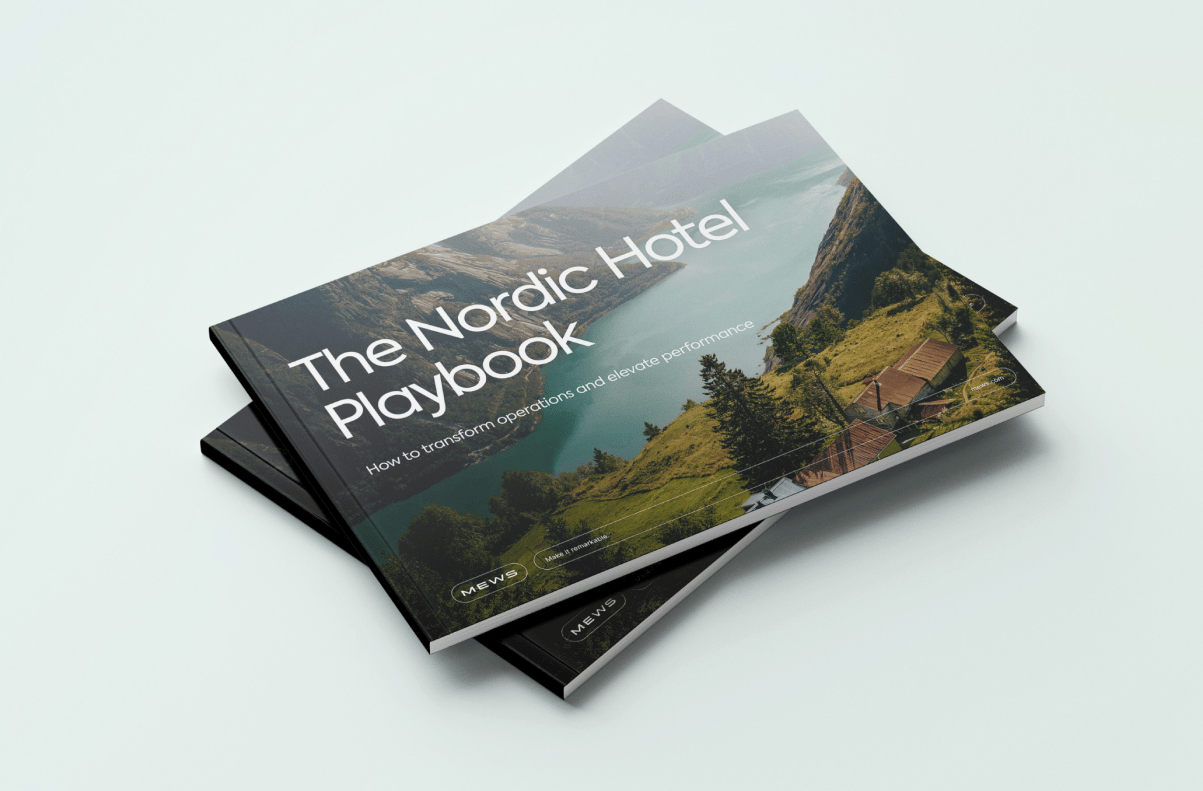Table of contents
The reality within the hotel industry is that online travel agencies (OTAs) are increasingly favoured by travellers who would rather have one seamless booking option than dozens of confusing booking engines offering irrelevant products and outdated loyalty schemes. For all of us within the industry, this is no longer news and persistent marketing campaigns by the likes of TripTease have served to underline it.
But hotels are fighting back
In short, we are seeing that big hotel chains are targeting consumers at a young age to help them understand that booking direct is the best and most cost-effective option and to wean them off their OTA habits.
The OTA winter may be coming but hotels have not yet laid down their arms and are aggressively fighting back for direct bookings. In 2015, Marriott was the first hotel giant to go on the offensive with its digital #itpaystobookdirect campaign advertising loyalty discounts to millennials. Hilton soon followed with its “Stop Clicking Around” campaign while Hyatt also announced a 10% discount for Hyatt Gold Passport members who book direct.
OTA users skew young – 36% of users are between 25 and 39 years of age according to Expedia, a remarkably high figure for an industry heavily catered towards older customers. A recent Deloitte study showed that only 55% of millennials keep one or more loyalty memberships, the lowest share of any generation.
The landscape is changing
Does the internet today lend itself to favour metasearch, OTA or direct channels? What about mobile?
“As with any online strategy, there really is no easy fix to OTA domination and it needs a full strategy which incorporates all of your data, such as knowing where your customers are coming from and when they are booking, rather than a silver bullet of some widget on your website,” says Richard Valtr, our founder here at Mews. “For those guests that do book directly, personalising their experience has never been more important.”
TripTease revealed that direct bookers listed lower prices, ease in booking and smoother check-in and personalisation as the top reasons behind why they choose to do so.
72% of all U.S. hotel bookings made within 48 hours of check-in are done through mobile devices"
It is not all bad news – mobile (read on for more details) and the general desire for customer’s to not spend too much time on a booking lends itself to booking directly. Not having to go through a channel manager and being able to get information directly from the “horse’s mouth” saves time. We have seen that leveraging a loyalty scheme to provide smart incentives and discounts will facilitate this.
“Hotels only need to understand how to achieve this better,” continues Richard Valtr. “For example, investing in broader connections to channels and not just standard ones (OTAs) will all become increasingly important – messaging platforms like WeChat, new media channels like Snapchat/Instagram or voice platforms like Alexa will all become part of the puzzle.”
How to increase direct bookings
We thought we would give you some tried and tested ways that can increase your direct booking percentage. In summary:
1. Build a great website with a compelling story
2. Offer great deals and personalisation
3. Be seen
1. Build a great website with a compelling story
Make sure you have a compelling story and it is front and centre on your website – millennials check an average of 10 websites before making a purchase so make sure your site is compelling enough to encourage a direct booking.
Website conversion optimisation
What is the actual conversion of your website or booking engine from the moment a guest enters a date to actually completing their booking journey?
A good guide to explaining hotel conversion rates from Otium Boutique who specialise in helping boutique hotels improve their conversions.
Improving your conversion statistics is crucial and the aim is to always beat the industry average of 2%.
Importantly, you need a good booking engine on your site which will enable you to convert fast and well. If a potential customer can’t book on your website this is only going to drive their business to OTAs!
Sabre’s platform has seen up to 5.5% conversions from its mobile responsive websites (see more details on mobile later).
Across the network of properties that are using our easy to use booking engine, the Mews Distributor, we are seeing an average conversion of 8%.
Make your websites simple and easy to use – a Triptease report found that 94% of people have abandoned a booking online because of the website they’re using.
Add plenty of good images and make sure they are high-resolution and large. Label all your images properly so that when people search for them they come up on Google.
The numbers don’t lie – we know that the more time potential guests stay on your website the more likely they are to book. Compel them to book with pop-ups and calls to action (CTA). Services like Qubit or Exponea can help along with free options like Sumo. Travellers researching hotels will always visit the website to get a sense of the place and look at photos and it is at this moment that hotels must strive to capture their attention and imagination. Offer them something for booking direct with copy like “book direct and save”.
Show user reviews – people are going to check hotel reviews on TripAdvisor anyway, so why not provide them on your site to keep them there?
Optimize for mobile
We believe (or rather, we know…) ‘mobile first’ websites will be the long term winners.
Our friends at Sabre recently asked hoteliers whether they still rely on separate mobile websites instead of having a single, responsive site design and, surprisingly, 40% said they still have a separate mobile site instead of a single, responsive one.
Data from 26.5 million hotel website visits from the first half of 2017 showed that responsive websites greatly outperformed non-responsive websites: look-to-book rates for responsive hotel websites averaged 5.5%, compared to 3.9% for non-responsive sites, while revenue-per-site -visitor averaged 16.5% for responsive websites versus for non-responsive sites. Furthermore, conversion rates have grown 88% on mobile travel sites.
So build a fully responsive mobile site! According to eMarketer, the majority of online bookings in the U.S. are now done by smartphone and this is rapidly rising while Google’s 2016 Travel Trends report suggests that 60% of searches for travel information come from mobile. Responsive sites reduce bounce times by increasing page load times and making the experience intuitive and displaying all the content well.
Mobile is particularly important for last minute bookings – 72% of all U.S. hotel bookings made within 48 hours of check-in are done through mobile devices (source hotels combined).
A mobile strategy is not only important for first-time direct bookings but increases the likelihood of repeat direct bookings and long-term loyalty. Features like mobile tickets and check-in can be hugely beneficial for increasing satisfaction and keeping consumers coming back. It’s one of the main reasons why we built the Mews Navigator app for hotels.
A survey from J.D. Power found that guests who book through an online travel agency or a mobile app not directly associated with a hotel are more likely to experience a problem and be less satisfied with their stay overall.
Other details to remember : make your site available in multiple languages, don’t forget to arrange OTA widgets on your site and, for the more adventurous, try use heat mapping on site to gauge where people are clicking (try Sumo app for this).
2. Offer great deals and personalisation
Too many hotels are making the mistake of playing the OTA game and commoditising accommodation. Instead, they should try and break that cycle and think of how to sell “experiences” with the accommodation as an aspect of that. For more colour, we recently wrote this blog post about how personalisation is the future of the hotel experience.
The best prices available should be on your own website. Though “rate parity agreements” bar hotels from undercutting OTA prices, hotels are allowed to offer lower rates to a select group of customers, such as loyalty members, without violating rate parity. Try offering multiple rates per day or differentiating between customer segments/geographies.
“For hotels, booking direct is almost like a game of trying to show a better rate without specifically breaking parity,” says Richard Valtr. “In any case, hotels should, at the very least, match the prices OTAs are offering.”
Get better pricing on your booking engine by using dynamic pricing. Dynamic pricing doesn’t mean to simply lower prices in the low season and to increase prices in the high season; nor does it mean to offer huge discounts when you realize that the hotel isn’t going to be as full as expected at a certain time. It is about offering promotions and special offers to returning customers and to particular consumers with your booking engine. These kinds of directed campaigns should be used to improve customer loyalty and overall brand recognition by meeting customers’ needs and desires and rewarding them for choosing your hotel.
Offer compelling perks, benefits and incentives for booking direct beyond pure savings. It doesn’t need to cost much to supply either : room upgrades, free wifi/room service/breakfast and flexible check-in/out rank highly in customer’s minds.
Create a unique experience. Marriott anticipates 76% of its guests will be millennials within four years and those in that demographic are seeking experiences rather than just a place to stay. Warm and engaging human interaction is a great way to differentiate from OTAs who don’t tend to offer this.
Use OTAs to drive direct bookings! This is no joke. In fact, it even has a specific term within the industry – customers finding your hotel via an OTA but then booking directly through you is known as the ‘billboard effect’.
OTAs are popular for initial research but this doesn’t mean everyone books through them. According to Tripadvisor 57% of people surveyed worldwide use an OTA to help plan their travel. But the better news is that Google observes that 52% of travellers visit your hotel website after seeing you on an OTA. So once they land on your website make sure they stay to book.
Many hotels don’t effectively track the actual cost of sales for each sale therefore they are not tracking what they are ultimately paying for. Hoteliers should choose a solution where they can see their commission level on every booking.
3. Be seen (marketing)
Get in front of your target audience. In general, focus on your hotel’s unique selling points. For example, one major advantage small hotels have over big brands is authenticity. While most small hospitality companies don’t offer loyalty points programs they often have features and services unique to their location. Encourage people to join your loyalty programme if you have one. Remember, human interaction is key – OTAs don’t tend to offer this.
Digital marketing
A). Direct (email) Marketing
Capture emails and encourage signups. For example, Squarespace has recently added pop-up windows to its service or try out free services like Sumo instead. You can easily link these to Mailchimp to store alls those precious emails and contact details.
Make sure to offer special rates directly by email. Remember, these can be outside the rate parity agreement.
B). Content Marketing
Write blog posts. Your blog is an excellent place to publish new and fresh content on a regular basis. Not only is this a way to provide your audience with useful and insightful posts to read but it is great for search engine optimization (SEO) as well. Optimize your blog posts for search engines with relevant keywords and internal links to drive more organic traffic to your website.
Why not offer local guides and use stunning local photography? If your budget can stretch to it, we believe that a hiring a team to do all this for you would be money well spent!
C). Search Marketing
Quality content is a fundamental part of SEO. Google bases rank partly on the relevance and quality of content for the users so write for your potential guests and your rank in the SERPs will follow. But you should also focus on the more boring technical stuff to help your ranking : meta tags and descriptions, title tags, H2 tags, Keyword usage, internal and external links.
D). Pay per Click (PPC)
You can set up PPC campaigns in Google Adwords. Basically, you create ads and bid on the keyword you want the ad to appear for. If your advert is clicked, you pay for that click. In the simplest terms, the higher your bid, the more likely your ad is to appear and get clicked.
E). Social Media Marketing (SMM)
We are big fans of marketing guru Neil Patel so check out his comprehensive guide to SMM and don’t forget to use influencers effectively.
Respond to online reviews/comments and participate in the conversation
Finally, make sure to educate your staff about your new direct-booking strategy and that everyone is aware of it. Make sure they know all the latest offers and deals and that they can easily explain the benefits of booking directly. Ensure check-in staff are briefed to collect email addresses from guests who booked via OTAs so you can include them in your future marketing. Add nice touches like providing guests who booked via an OTA with a personalised email from the GM offering them a discounted rate if they book directly next time.

Author
Mews
Hospitality hot takes straight to your inbox
Sign up to our monthly newsletter for industry insights, product news, partner updates and more.

The Nordic Hotel Playbook
Download now

.jpg?width=624&height=555&name=GLAMPING%20(1).jpg)

.webp)